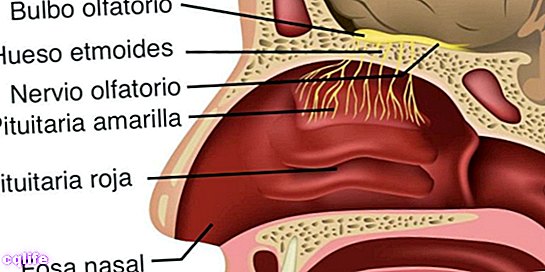We explain what the sense of smell is, what it is for, how it works and how to take care of it. Also, what are olfactory receptors.
It is estimated that we can recognize around 10,000 different smells.What is smell?
Smell or sense of smell is called one of the five senses with which the Humans and many animals we can perceive the surrounding reality. In this case, it is the ability to detect particles and traces of chemical substances at air, using the receptors of the nasal cavity (that is, the nose).
Smell is a very common ability in the nature, so much so that it is the primary meaning of many animal species. However, in the case of invertebrates Y amphibians It is more diffuse and less recognizable, since these animals have the ability to perceive chemicals from the environment through the skin and other organs very different from the nose of the vertebrates superiors.
In any case, through smell we perceive odors: particles that come off the matter and that remain in the air, from where they are taken during the breathing by specialized nerve receptors in the nose.
In the case of human beings, it is a little cultivated sense, in relation to sight and hearing, but not for that less important, since it connects much more quickly with our memory. It is estimated that we can recognize around 10,000 different smells on average throughout our lives, distinguishing between pleasant and unpleasant, pleasant and stimulating.
What is smell for?
The sense of smell is of critical importance for living beings, since it allows us to recognize matter without coming into direct contact with it, and even without having any idea that it is there.
Being a passive sense, which requires little concentration, it is a continuous source of information regarding the environment, revealing the presence of smoke or strange odors that can alert you to a threat. In addition, the sense of smell allows us to identify familiar environments (which is precisely why animals “mark” with their smell) and to warn of the state and composition of the food before ingesting it.
How does smell work?

Smell is the interaction between molecules odoriferous (that is, with odor) present in the atmosphere and specialized receptors present in the nasal mucosa, neurons capable of transforming chemical information into electrical impulses that are transmitted to the brain.
For this to happen, the air laden with the odoriferous particles must be inspired, and come into contact with the olfactory mucosa that lines the inside of the nose. There, olfactory sensory cells (about 20-30 million on average) pick up these chemical traces and transport them via their cilia (filaments) and protein fixatives present in the mucus, so that they can meet the specialized neuroreceptors.
The nerve information from these neurons penetrates the skull through micro-holes in the cribriform plate of the ethmoid bone, and in the anterior region of the brain they reach the olfactory or olfactory bulb, a neural structure of the forebrain that recognizes the information and transmits it to the upper areas of the brain. brain, where it enters conscious thought.
Smell is a sense very similar to taste, since both consist of chemoreception, but while the first is at a distance, the second is through direct contact with matter. Both stimuli, in fact, are processed in the taste center and the taste in the middle part of the frontal lobe, that is, in the same region of the brain.
Olfactory receptors
The olfactory receptors are responsible for converting the chemical information of the smell into nervous information. They are found in the mucosa of the nasal cavity, distributed in two clearly differentiated regions:
- The red pituitary, with a large presence of blood vessels but without olfactory functions, which heats the inhaled air and filters it of impurities and particles.
- The yellow pituitary, where the cells olfactory that contain smell receptors.
Smell receptors are many and highly specialized, especially in the mammals. It is thought that there can be up to 1000 different receptors, so the proteins responsible for processing odor occupy a good portion of the genome.
Each of the specialized receptors recognizes a different type of odor, so the so-called “primary odors” (which make up other more complex aromas) are very many and difficult to define.
Even so, it is estimated that the odors available to humans can be classified into 10 different lines: fragrant or floral, woody or resinous, chemical, citrus, non-citrus fruit, menthol, sweet, smoky or burnt, rotten and pungent or rancid.
Smell care
Taking care of the olfactory sense is reduced to taking care of the nose itself and its internal components. For this, it is advisable to comply with the following recommendations:
- Keep the nostrils regularly clean, by blowing but without putting excessive pressure on the nose.
- Do not introduce objects into the nasal cavity, much less those that can hurt it, change its chemical constitution or that can lodge inside.
- Avoid the consumption of cigarettes and similar substances, as well as very strong-smelling aerosols.
- Do not expose yourself to high concentrations of humidity, dust or substances with strong odor for a long time.
